What is meant by diamond color?
For diamonds, color is defined as the relative position of a diamond’s body color on a colorless to yellow or brown scale.
The GIA color grading scale called the D-Z scale ranks diamond color beginning with ‘D’ for colorless diamonds and continuing down the alphabet to ‘Z’ for light yellow or brown.
How does a diamond grader determine the color of a diamond?
When we speak about color here, we are referring to the body color of the diamond, not the colors that radiate from the stone as it or the light moves.
The ranking is based on the absence of color. Therefore value increases the more colorless (higher up) a diamond ranks on the scale.
Since the type of light affects the way color will appear, diamond graders always use a northern-daylight equivalent light source. Brilliant cut diamonds are color graded with the table down, in order to avoid the internal reflections seen when the diamond is viewed in the face-up position. (See image below.)
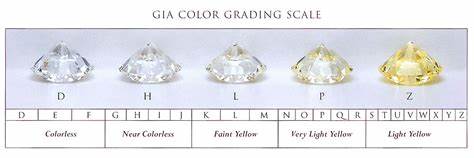
GIA Color Grading Scale (D to Z Scale)
D, E, F Colorless-But slight differences in transparency
G, H, I, and J are all considered near colorless-once set, very difficult to see yellow face up
K, L, M, Faint Yellow-visibily yellow
N through R is veryLight Yellow-obvious to untrained eye
S-Z Light Yellow-very obvious
The more colorless a diamond, the rarer it is, which increases its value.
The most reliable method to color-grade diamonds on the D-Z, is to compare them to master stones (graded by the GIA.) Because color grading is subjective, a minimum of two highly trained gemologists will examine the diamond being graded and come to a consensus.
The larger a diamond is, the more graders will examine the stone. Once a grade has been determined, the grade is then included in The Diamond Grading Report.
BTW, all lab-created diamonds are also evaluated using the GIA scale, but indicated on their reports as Colorless, Near Colorless, Faint, Very Light and Light.
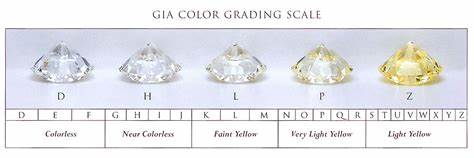
They may not be graded in a GIA lab, in fact, most are graded by IGI, The International Gemological Institute, however the GIA color grading scale is used to assign color grades.
To learn more about lab-created diamonds, read our article Lab-Created Diamonds: A Sustainable And Ethical Direction
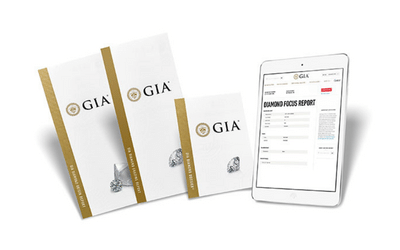
What happens when a diamond exhibits more body color than is seen in the Z master stone?
It then moves into the realm of fancy-color diamonds!
A fancy color diamond is a yellow diamond (or any color) that exhibits more color than the Z master stone or a diamond that exhibits any color of the spectrum. Fancy color diamonds are exceptionally rare.
It is estimated that approximately 1 diamond crystal for every 10,000 is a fancy color. The basic hues are: yellow, pink, blue, and rarely orange, green, blue, purple, and red, if available.
These special diamonds are not widely available. You must visit the large jewelry houses such as Graff Diamonds, Cartier, or Tiffany & Co. to find a selection of fancies and to speak to fancy color diamond specialists.
For additional information on the topic, read our article: The Magic Of Fancy Color Diamonds
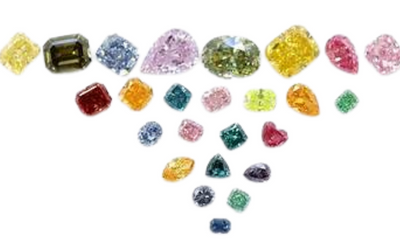
What Is Fluorescence?
Certain diamonds may exhibit a property known as fluorescence. Fluorescence is a natural phenomenon found in many diamonds and many colored gemstones.
When exposed to ultraviolet light a diamond with fluorescence appears to glow, most often blue or white, to varying degrees. Fluorescence is graded Faint, Medium, Strong and Very Strong.
The last two grades impact the beauty of a diamond, which may make the diamond appear “oily.”
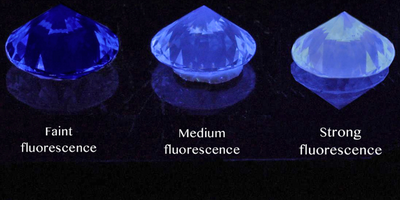
Did You Know…
that drinking coffee distorts color vision? When I studied diamond grading at the GIA*, Gemological Institute of America, in California, we were asked not to drink coffee in the morning prior to our color grading classes!
Related Topics:
Lab-Created Diamonds: A Sustainable And Ethical Direction
Why You Should Consider Buying Lab-Created Diamond Stud Earrings
Buying Guide: Engagement Rings
The Magic Of Fancy Color Diamonds
What Are G.I.A. Certified Diamonds?
Is it a Real Diamond or Something Else?
Thank you for reading our article; please leave your comments and questions below.
Happy Shopping!
Francesca de Granville, G.G. (GIA) F.G.A.
Affiliate Disclosure:
When you purchase through our links, we may receive a small commission.
Prices are exactly the same for you if your purchase is made through an affiliate or a non-affiliate link.
You will not pay more by clicking through our links.
Read our full Affiliate Disclosure



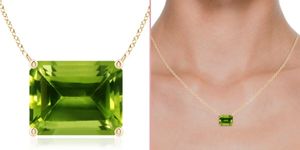
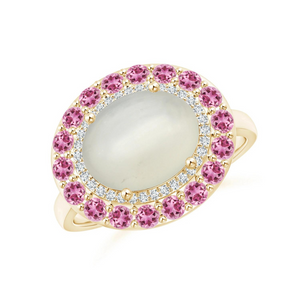
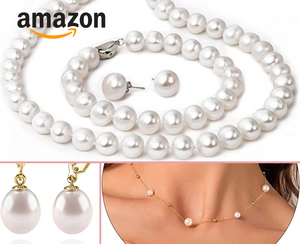



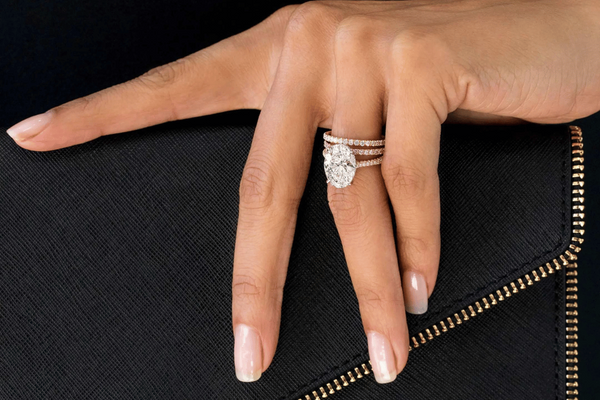

Member discussion